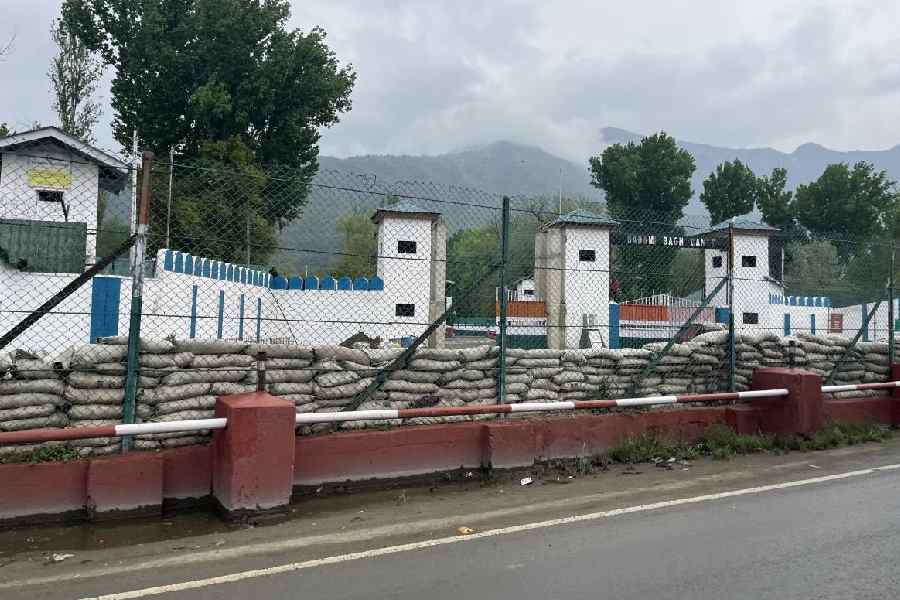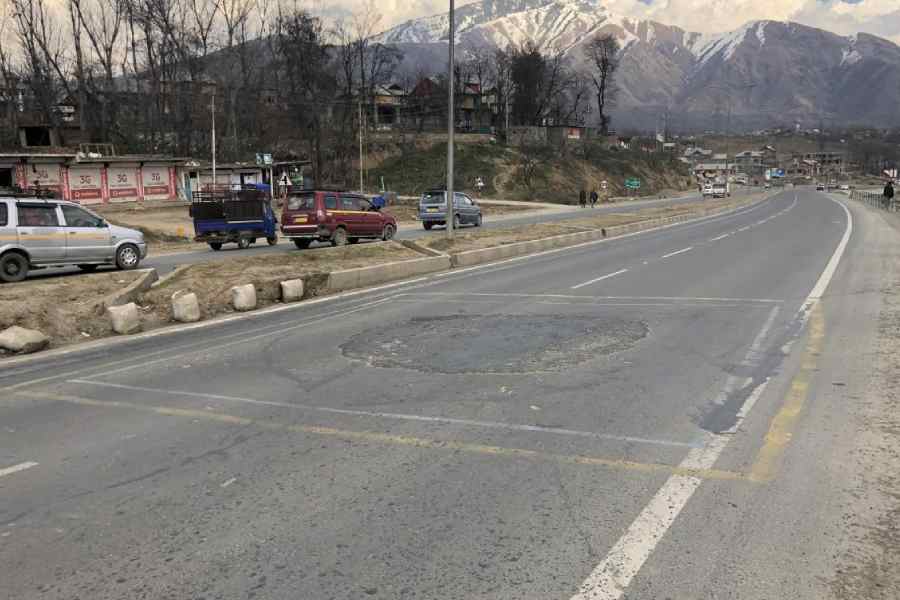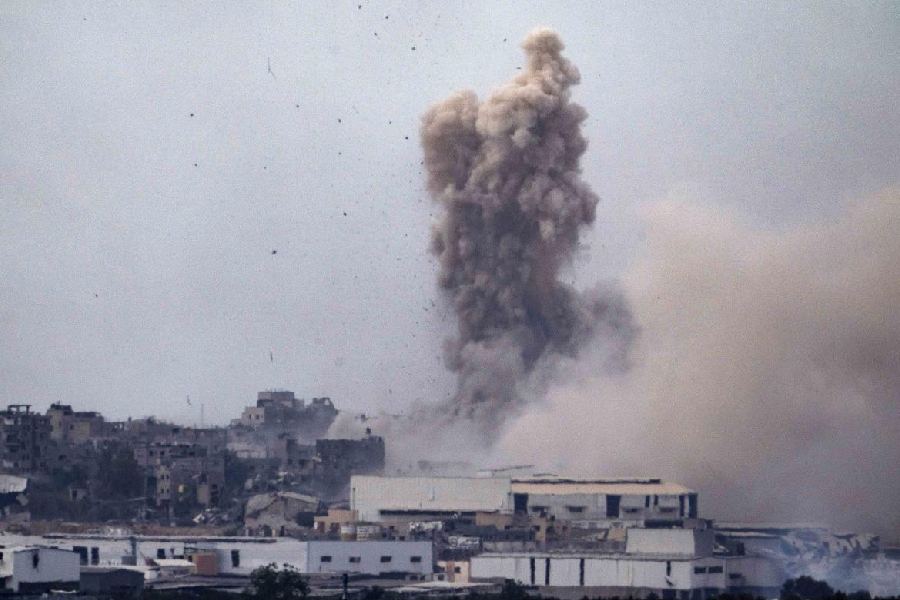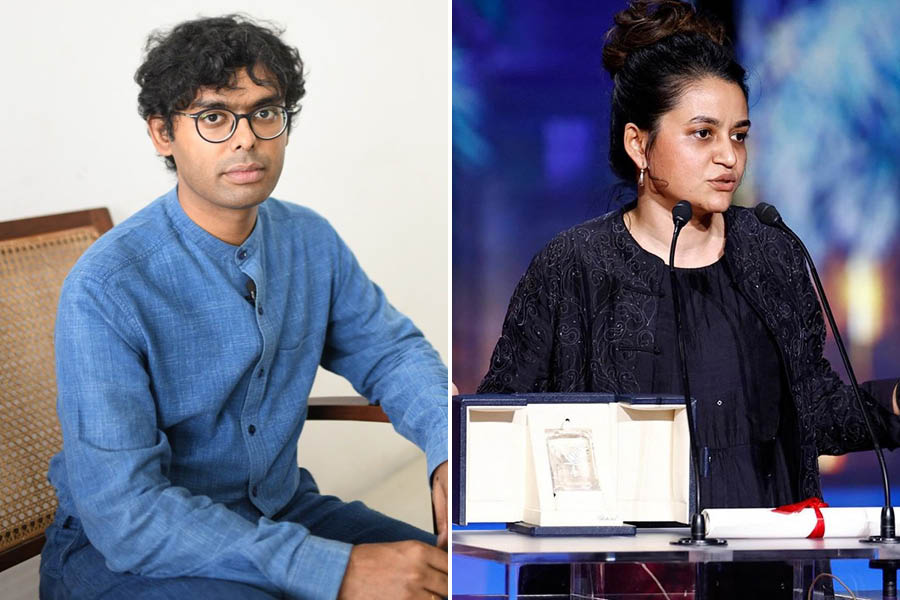This is where it happened. This is where the 2019 Lok Sabha election was delivered the lightning bolt that made it pivot decisively Narendra Modi’s way.
This is where Lucifer expended his wares — the gloomy afternoon of February 14 five years ago — and superimposed on this heavenly vista screenshots ordered from hell. The belly of a CRPF convoy blown to cinders, 40 jawans snuffed out, dozens of their mates blistered, a nation numbed. A nation swiftly spurred to a fit of belligerent ultranationalism whose flaming embodiment was Modi.
Tragedy turned, via the Balakot broadside, to triumph; a delinquent security lapse offered up a lavish mandate, such that it whetted in elected authority the appetite for authoritarianism.
On a sunny May morning, you’re well entitled to bolts of rapture as you head out, past the Badami Bagh garrison, headquarters of the Chinar Corps of the Indian Army, and its severe arrangements against the prospect of menace. Quite suddenly, the Jhelum steers up close and begins to hug the road — a strip of muddy gold streaked by boats lumbering on the water; before the road, any road, came about, the Jhelum was the chief carrier and transporter, the Valley’s great waterway.
Past the city’s periphery, the mill of traffic left well behind, the countryside begins to reveal itself, shedding dust and congestion and cacophony, layer upon layer — a countryside revelling in the arrival of warmth. The divine delicacy of domes, the sun-kissed roofs of clustered neighbourhoods, a grove of chinars preening in the first foliage of spring, a skiff glinting on the river, a swarm of mallards squawking overhead en route to the many marshlands around, a flaky bank of clouds scampering the sky.
At Pampore, the first significant roadside habitation south of Srinagar, a warm waft from the ovens breaks the sylvan reverie. No more than a highway rash of retail commerce, Pampore churns out some of the most vaunted varieties of breads in the Valley. It is also the gateway to the sprawling mud promontory that yields some of the best saffron the earth has to give — tens of flat acres rolling down both sides of the road.
It has now become a road leaping away ahead of itself, a six-lane dual carriageway, like someone had rolled a ribbon down the landscape. The sky so open and enormous, it looks like the best prescription for claustrophobia. You come upon a column of outlets, arranged barracks-like and over-hewn with billboards. Saffron shops, each making feisty claims of quality excellence over the other. You’ve come upon Leithpora. You’ve come upon the scar that brought two nuclear powers to the brink of war. To the right of this location at not such a far distance, lies Pulwama, which gave to this scar its name.
When I first came to this site, chasing the election mood in Kashmir a few weeks after the explosion in 2019, the gash was still fresh and visible, filled out with grit and tar and fenced with a perimeter of paint. All physical signs of it have now been effaced as if by expert rounds of plastic surgery; in ways the site is metaphoric of the drastic changes that were wrought on the erstwhile state of Jammu and Kashmir a little down the line on August 5.

The entrance to the Badami Bagh Cantonment, headquarters of the Chinar (15) Corps of the Indian Army. Picture by Sankarshan Thakur
But it remains an issue of debate if the correction is more than just cosmetic.
The persisting khaki siege on Kashmir should tell you that claims of having established mastery over menace are more rhetoric, less a reflection of reality. When G20 delegates were fancifully brought here for a showcased tour last year, fear left the organisers so flat-footed the guests could not even be driven up to the Dachigam National Park abutting Srinagar, much less be treated to a day out in Gulmarg.
If you’ve kept up with news from the Valley, or been to your travel agent recently, you are probably updated on the unprecedented numbers of holidaymakers downloading themselves over these parts. But you would also have heard that the archetypal Kashmir story survives — it is the story that has been told in defence of deferring elections and in advocacy of delaying the return of Jammu and Kashmir to statehood. It is the story that gives the lie to claims that all is well with Kashmir. It is the story you hear off every ambush, every violent engagement with militants, every foiled attempt at infiltration. It is the story you can’t avoid being reminded of because each step of the way in the Valley you know peace is a fragile bubble resting on the barrel of the gun.
There is perhaps no better place to sense that dichotomy of logic than here. Right, left, afore, aft, whichever direction you head from here, you’ll head into boroughs ridden with grouse and woe, and with jackbooted jawans no less. This is south Kashmir, the cradle of militancy and terror that continues to defy the most dogged deep-ditch offensive to snuff out.
To every side of this road lies a blistered geography that violently begets what it gets. Should you commit regular datelines of conflict and strife to a map, it is sure to look pitilessly pellet-ridden. Tral, Shopian, Kulgam, Shangus, Karimabad, Kakapora, Kellar, Imamsaheb, Khudwani, Sopath-Chowgam, Anantnag, Damhal-Hanjipora, Karimabad, Kokernag, Dayalgam, Samboora. Pulwama not the least. All of them and more, looped into a vicious chain of repression and reprisal that may have fallen silent but hasn’t quite been quelled or conquered yet.
Kashmir votes on May 20 and 25











